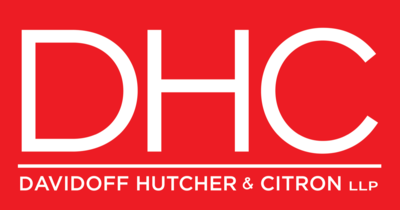December 28, 2020 — Last night, President Trump signed the Consolidated Appropriations Act of 2021, releasing $900 billion in stimulus relief for the COVID-19 pandemic into the economy.
DHC has prepared the following overview of the COVID-19 Relief Package, highlighting key provisions in the legislation impacting small businesses. Included in the legislation is eligibility for a Second Draw Paycheck Protection Program Loan, under which many small businesses will be able to apply for forgivable loans.
DHC’s attorneys and government affairs professionals are working with our clients to better understand the opportunities and modifications to existing programs created by the legislation.
ELIGIBILITY FOR SECOND ROUND OF PPP LOANS
- Narrower Eligibility Requirements. Borrowers must:
- Have been eligible for the initial round of PPP loans, and must have used (or will have used by the time of disbursement of the second draw loan) the full amount of the initial PPP loans;
- Have less than 300 employees (together with affiliates); and
- Be able to demonstrate a year-over-year decline of 25% or more gross receipts for any quarter in 2020 (as compared to the same quarter in 2019).
- Calculating Loan Amounts. Loans are capped at $2 million.
- Calculated by multiplying the average total monthly payroll costs for the one-year period prior to date the loan is made or calendar year 2019, at the election of the borrower, by 2.5.
- Borrowers within the accommodation and food service industry (NAICS 72) are eligible to use a 3.5 multiplier instead of the 2.5 multiplier for calculation of loan amount.
- Seasonal employers may use any 12-week period between February 15, 2019 and February 15, 2020 for average monthly payroll costs to calculate loan amount.
- Forgiveness.
- 60% of the loan must be spent on payroll costs.
- 40% of the loan may be used for covered mortgage, rent, utility payments, covered operations expenditures, covered property damage costs, covered supplier costs, and covered worker protection expenditures.
PERMITTED USES EXPANDED. Borrowers can spend PPP Funds on additional types of expenses:
- Covered operations expenditures.
- business software or cloud computing service that facilitates business operations,
- product or service delivery,
- the processing,
- payment, or tracking of payroll expenses,
- human resources,
- sales and billing functions, or accounting or tracking of supplies,
- inventory,
- records and expenses.
- Covered property damage costs.
- property damage, vandalism or looting due to public disturbances that occurred during 2020 that were not covered by insurance or other compensation;
- Covered supplier costs.
- payments to a supplier of goods, for the supply of goods that are
- “essential to the operations of the business” at the time of such expenditure, and
- were purchased pursuant to contracts that were in effect prior to the covered loan period (or during the covered loan period, in the case of perishable goods).
- payments to a supplier of goods, for the supply of goods that are
- Covered worker protection expenditures.
- any expenditure that facilitates compliance with HHS, CDC, or OSHA requirements (or equivalent state/ local requirements) related to COVID-19.
- The foregoing explicitly excludes the cost of any residential real property or intangible property.
- Qualifying Payroll Costs.
- group life,
- disability,
- vision or dental insurance policies, and
- group health insurance premiums.
- Non-profit organizations organized under Section 501(c)(6) of the Internal Revenue Code (e.g., trade associations and chambers of commerce);
- Tourism and hospitality marketing non-profit or governmental entities (defined as “destination marketing organizations”);
- Newspaper and broadcasting companies (including non-profit organizations with NACIS codes beginning with 5151) that were previously ineligible to apply because of the traditional application of SBA affiliation rules; and
- Housing cooperatives with less than 300 employees.
- PPP Expenses are deductible. Section 276 of Title III provides that “no deduction shall be denied [and] no tax attribute shall be reduced . . . by reason” of the exclusion of PPP funds from a borrower’s gross income. This change overrides prior IRS Guidance to the contrary and makes clear that business expenses paid for using PPP funds are deductible.
- Tax Free Forgiveness of PPP Loan will not Reduce Tax Basis or Attributes. Title III further provides that “no tax attribute shall be reduced and no basis increase shall be denied, by reason of the exclusion” of PPP funds from a borrower’s gross income. In the case of a partnership, the partners may use the basis created by their PPP loan to deduct the costs that give rise to the forgiveness of the PPP loan because even if the PPP loan is forgiven the partner will be allocated an amount of tax-exempt income equal to such costs.
- Confirmation that forgiveness is non-taxable. The bill further codifies the original intent of Congress that forgiveness of any PPP loan is not taxable.
SIMPLIFIED FORGIVENESS PROCEDURE. Loans up to $150,000 will require completion of a one-page online or paper form with limited borrower certifications.
We continue to analyze the Act and monitor the rules and regulations regarding its implementation. Please contact us if you have any questions about the Act and how it can help your business.

